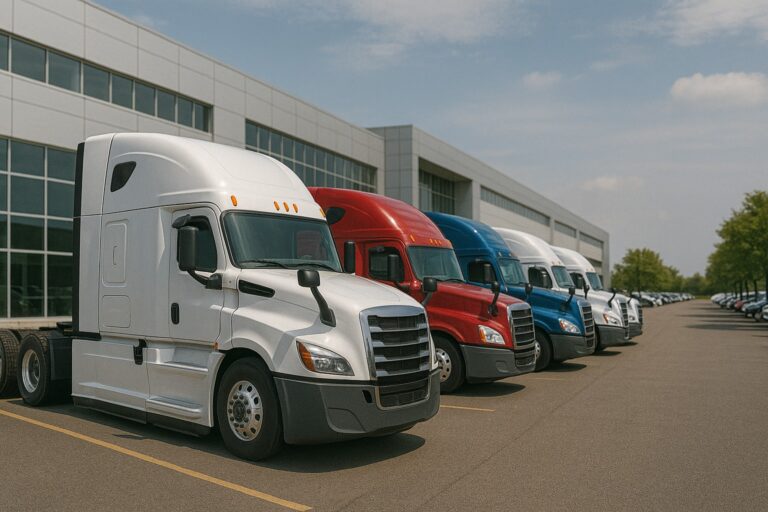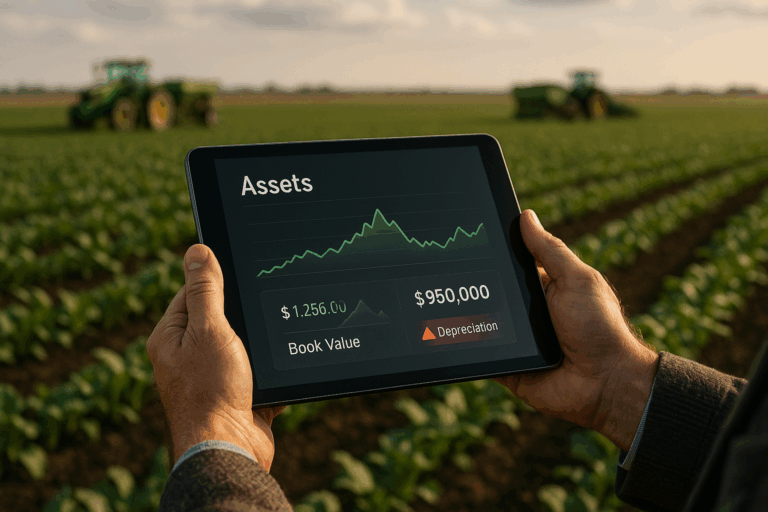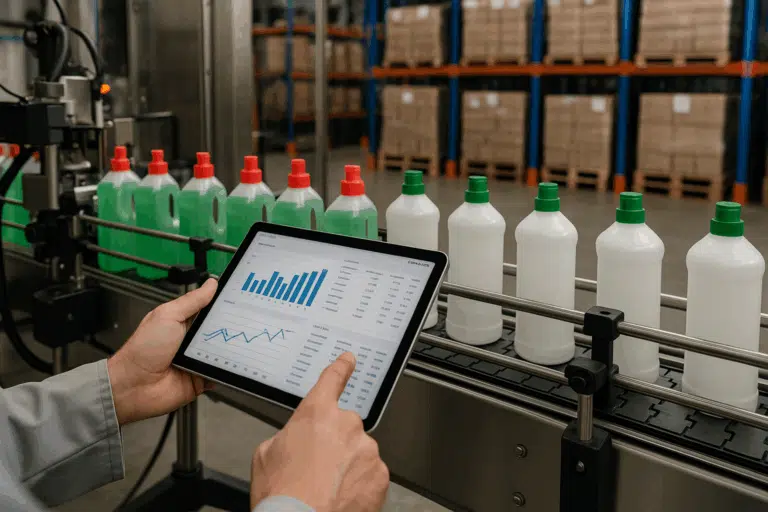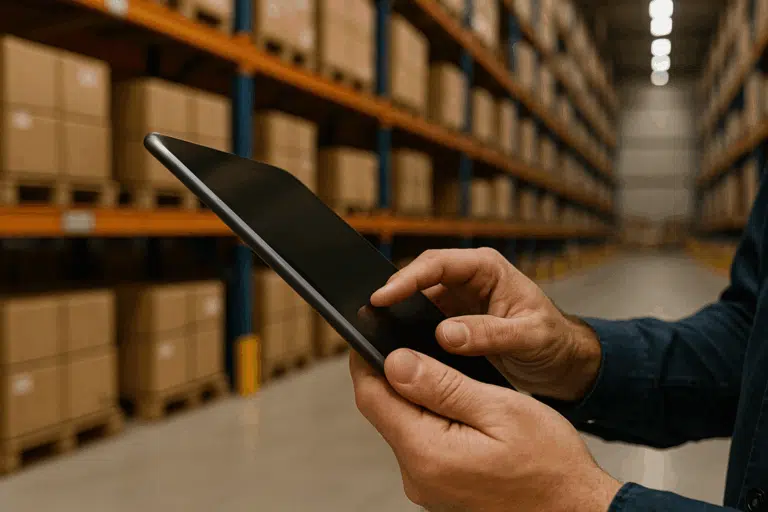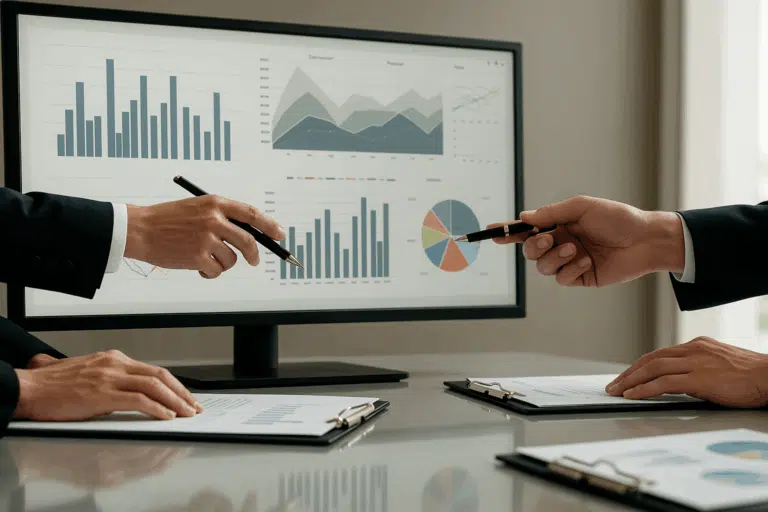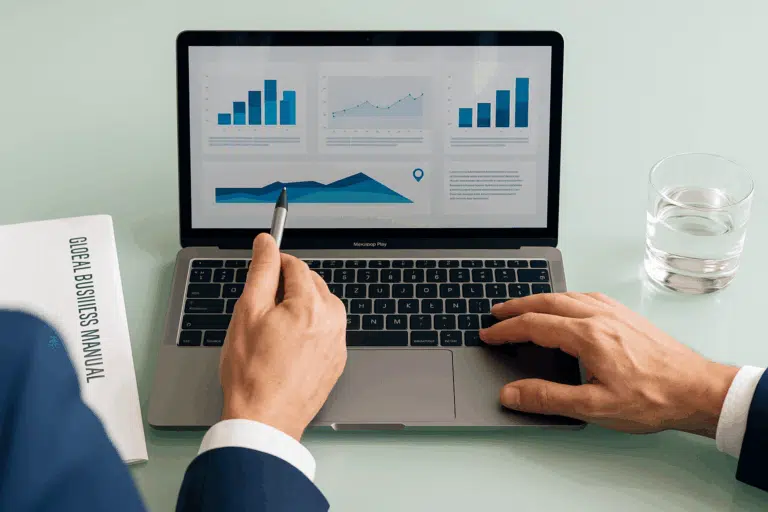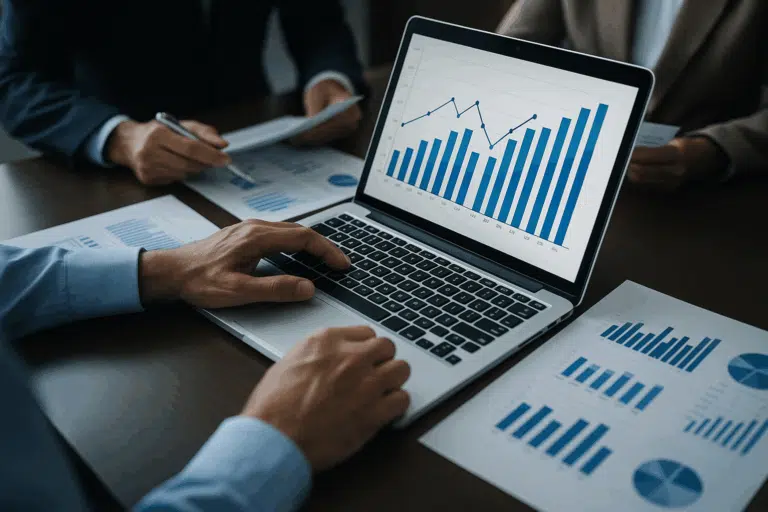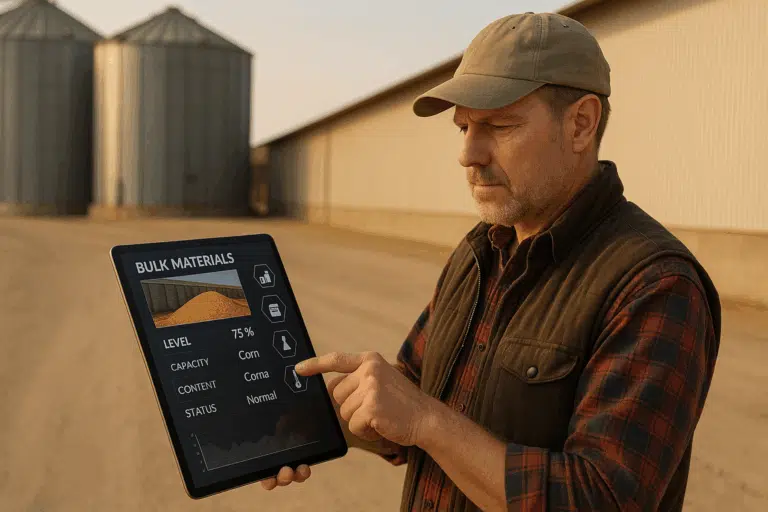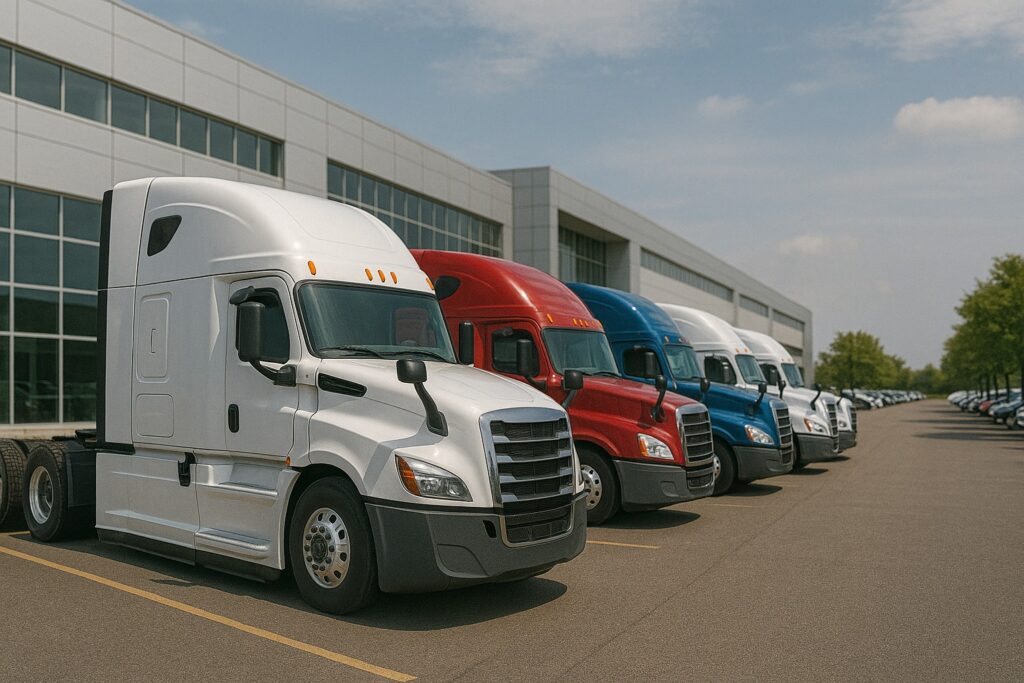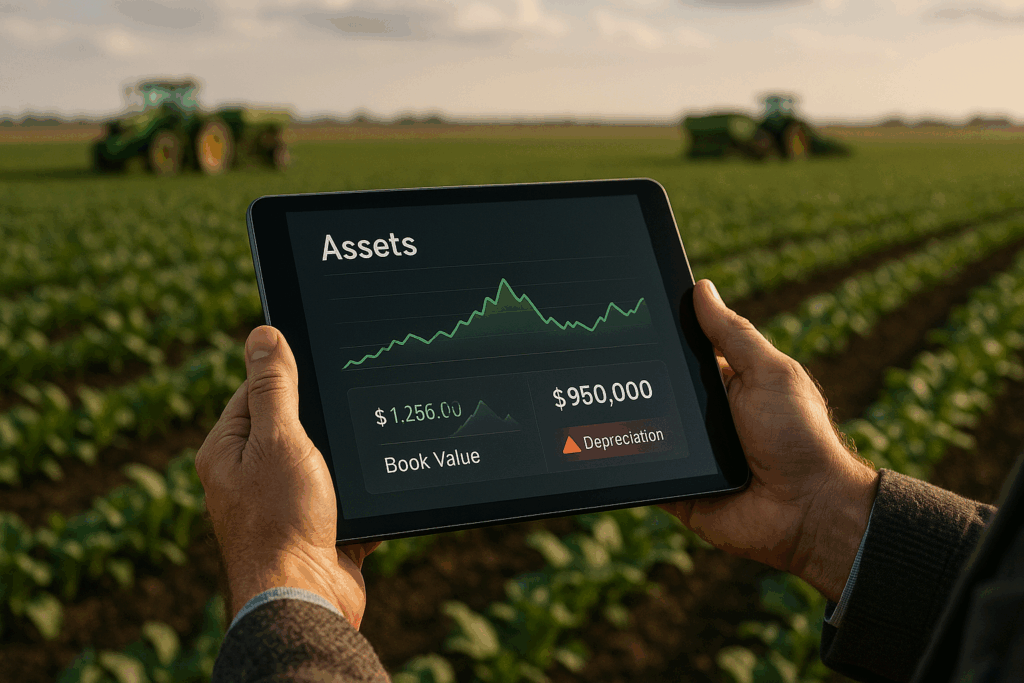Are you sure your commercial fleet is complete and follows the rules? At The CPCON, we use over 25 years of experience and the latest tech for commercial trucks asset verification. Our method makes sure your assets are managed right. It also uses RFID and barcode scanners for better clarity, rules following, and work flow.
Table of Contents
ToggleKey Takeaways
- Accurate commercial trucks asset verification is key for good fleet management and following the rules.
- Using advanced tech like RFID makes the verification better.
- Keeping your Fixed Asset Register updated helps with clear decisions.
- Regular checks and audits make sure your asset data is reliable.
- Following the rules is important for smooth work and avoiding fines.
Introduction to Commercial Trucks Asset Verification

Checking the details of commercial trucks is very important. It keeps your fleet’s value and quality high. This includes checking vehicle registration and making sure trucks follow the rules.
Using these methods helps keep records up to date. This includes the newest trucks from 2023 and 2024.
Importance of Asset Verification
Knowing why asset verification is important is key. It helps find problems and keeps records right. The Truck Blue Book has been a top guide for over 90 years.
It covers trucks from 1981 to now. The Price Digests tool also checks VINs for trucks. This makes sure your information is correct.
- Data Accuracy: Accurate records are essential for fleet management.
- Maintenance Scheduling: Helps in planning and scheduling maintenance activities.
- Compliance Assurance: Ensures adherence to regulatory requirements.
Commercial Vehicle Compliance
Following the rules is very important for trucks. The VIN tool checks for mistakes. It makes sure trucks meet all the rules.
Price Digests also helps with truck values. It lets you update and customize values. This helps manage your fleet well.
| Feature | Details |
|---|---|
| VIN Verification | Checks for errors, mismatched WMI, and data scope boundaries. |
| Value Adjustments | Premiums, discounts, trade-in valuation adjustment, and taxes. |
| Compliance Trends | Value trend line showing six months of valuations. |
Keeping trucks in line with rules is key. Regular checks and updates with tools like Price Digests help. They make managing your fleet easier and more reliable.
Leveraging Fleet Management Solutions
In today’s fast-changing world, using a fleet management solution is vital. It boosts efficiency and keeps you in line with the law. A good fleet asset register makes things run smoother and helps you make better choices.
Benefits of a Fleet Asset Register
A fleet asset register keeps track of all your vehicles. It has details like when you bought them and when they need to be replaced. Here are some big advantages:
Better Recordkeeping: Keeping detailed records helps with taxes and figuring out how much you can write off. It also prevents money mistakes.
Improved Compliance: It sends alerts and reports to help you follow the rules. This keeps you from getting fined and makes sure you meet FMCSA standards.
Real-Time Updates: It lets you update vehicle info easily. This is super helpful during audits because you have the latest info.
Managing Fleet Vehicles Efficiently
Managing your fleet well is key to success. A top-notch fleet management solution makes things easier:
Better Workflow: It lets you set up roles and permissions. This makes things more secure and easier to manage.
Proactive Maintenance: It uses AI and IoT to check on your vehicles before they break down. This saves time and money and makes your vehicles last longer.
Fuel Management: It tracks how much fuel you use and when your vehicles are idling. This saves money and is good for the planet.
AI-Powered Insights: It gives you data to make quick decisions. This helps you find the best routes and makes your fleet more productive.
At The CPCON, we help you manage your fleet better. We give you the tools and knowledge to keep your vehicles in top shape. Our technology and expert advice make sure you’re always in compliance.
| Feature | Benefit |
|---|---|
| Automated Alerts | Proactive compliance tracking |
| Customizable Dashboards | Personalized data views for fast insights |
| Smart Reporting | Detailed insights into compliance gaps and renewal timelines |
Understanding Vehicle Inspection Services
Our vehicle inspection services help your fleet run smoothly. We check vehicles regularly and keep up with service schedules. This keeps your commercial vehicles safe and running longer.

Comprehensive Vehicle Checks
We do seven types of DOT inspections. Each one checks different parts of vehicle safety and rules:
- Level I: North American Standard Inspection—most thorough, covering components like seatbelts, brakes, headlights, and more.
- Level II: Walk Around Inspection—surface-level functionality checks and paperwork review.
- Level III: Driver-Only Inspection—focuses on driver credentials and traffic violations.
- Level IV: Special Inspection—addresses specific components or paperwork concerns.
- Level V: Vehicle-Only Inspection—examines mechanical components at the carrier’s location.
- Level VI: Enhanced Inspection for Radioactive Shipments—includes Level I examination with added radiological requirements.
- Level VII: Jurisdictional Mandated Inspection—specific checks for school buses and shared-ride vehicles.
The Level I North American Standard Inspection is the most detailed. It checks all major parts and driver licenses. The Level V inspection looks at vehicle parts only and happens at the carrier’s base.
Tracking Maintenance and Service
Having a good fleet maintenance plan is key. Our tracking solutions help:
- Monitoring of vehicle conditions and part replacements.
- Scheduling regular service intervals.
- Real-time issue resolution, preventing major problems and increasing inspection pass rates.
Using digital tools for inspections can make them 15% faster. This means they are more accurate and cut down on downtime. Common issues include ELD mandate problems, invalid licenses, and bad cargo securement.
| Inspection Level | Focus | Components Checked |
|---|---|---|
| Level I | Comprehensive | Seatbelts, brakes, headlights, tires |
| Level II | Surface-Level & Paperwork | Driver’s history, licenses |
| Level III | Driver-Only | Driver credentials, traffic violations |
| Level IV | Special Inspection | Specific vehicle components or paperwork |
| Level V | Vehicle-Only | Mechanical components |
| Level VI | Radioactive Shipments | Enhanced out-of-service criteria |
| Level VII | Jurisdictional Mandated | School buses, shared-ride vehicles |
Our vehicle inspection services keep your fleet safe and efficient. This makes your operations better and more reliable.
Utilizing Asset Verification Software
In today’s fast world, using good tools is key for success. Asset verification software is a top tool for many fields, like fleet management. The global asset tracking market is growing fast, showing how important these systems are.
Features of Leading Asset Verification Software
The best asset verification software has many cool features. These help make work better and keep data safe. Some main features are:
- High-speed APIs for easy data sharing
- Accurate VIN prefill capabilities
- Real-time tracking and monitoring
- Following industry rules
- Easy to use and can be customized

These features make asset verification software more than just a tracker. It’s a full solution for managing and protecting assets.
Integration with Fleet Management Systems
Asset verification software works great with fleet management systems. This is a big plus for companies that use a lot of vehicles. By linking these systems, companies can:
- Get more accurate and consistent data
- Plan maintenance better
- Save money by using assets wisely
- Follow safety and rules better
This link helps companies manage their assets better. It gives them more control and insight into their work. This teamwork makes companies more efficient and ready for change.
In short, using asset verification software with fleet management systems is smart. It makes data better, work more efficient, and follows rules. Companies that use these tools are ready for today’s asset management challenges.
| Integration Benefits | Description |
|---|---|
| Data Accuracy | Provides consistent and accurate asset data. |
| Operational Efficiency | Streamlines processes and reduces costs. |
| Compliance | Ensures adherence to industry regulations. |
| Asset Utilization | Optimizes the use of fleet assets. |
Asset Tracking Technology: RFID and GPS Solutions
Using RFID and GPS in truck verification makes things better. It makes operations smoother, keeps assets safe, and helps manage fleets well. This tech lets you track things in real-time and get accurate data, helping you make smart choices.
Benefits of RFID in Asset Verification
RFID is key for checking commercial truck assets right and fast:
- Inventory Accuracy: RFID tracking boosts inventory accuracy from 63% to 95%.
- Cost-Efficiency: RFID tags start at $0.08 each, making it a budget-friendly option for tracking many assets.
- Signal Range: Active RFID tags can reach up to 150 meters. High-frequency ones cover about 1 meter.
- Industry Impact: In Healthcare, RFID saves a lot of time by helping find equipment quickly.
Using GPS for Real-Time Tracking
GPS helps track things in real-time and gives useful data on how assets are used. This makes operations more efficient:
- Real-Time Monitoring: GPS trackers send location info every ten seconds, keeping fleets safe and accountable.
- Extended Battery Life: Battery-powered GPS devices last for years, ensuring assets are always monitored.
- Detailed Reporting: Reports on running hours, idle time, and engine checks help plan maintenance better.
Using RFID and GPS together makes managing assets much better. It boosts efficiency and cuts costs. For more on how to use these tools, check out asset management preventive maintenance software.
Also, using GPS tracking can bring other benefits like:
- Improved customer service with accurate location tracking and quick asset rerouting.
- Following rules by keeping maintenance logs and usage histories up to date.
- Lower insurance costs because GPS tracking reduces risks.
By using these technologies, companies can work more efficiently and use their assets better.
Maintaining Accurate Truck Maintenance Records
At The CPCON, we stress the need for keeping truck maintenance records up to date. It’s key for ensuring regulatory compliance and keeping fleet values high. We track every service and repair to keep your fleet running well and following the rules.
Documenting Service and Repair History
Keeping a detailed log of maintenance is essential. It keeps trucks running smoothly and meets industry rules. Here are some important points:
- Major carriers and drivers must use Electronic Logging Devices (ELD) by December 16, 2019.
- Records of maintenance must be kept for 30 days or more.
- Costs of trips, drug tests, and driver qualifications must be documented as per FMCSA rules.
- Ignoring reserve schedules can cause fines and delays.
Ensuring Regulatory Compliance
Following rules means keeping maintenance records and documents current. This avoids fines. Key points include:
- Keeping dispatch and trip records for at least 6 months.
- Storing drug and alcohol test records for 1 to 5 years, based on the result.
- Driver qualification files, like medical certificates, must be kept as per 49 CFR Part 391.
- Accurate tracking of fuel purchases and miles is needed for IFTA.
Our method helps fleet owners avoid problems, keep vehicles reliable, and follow safety rules.
Using a central system for maintenance scheduling helps with ensuring regulatory compliance. It tracks service times, monitors vehicle performance, and sends reminders for tasks.
Conclusion
In the world of commercial trucks, using technology and smart strategies is key. Tools like RFID and barcode systems help a lot. They cut down on mistakes in money reports, make sure everyone is responsible, and keep assets safe from theft.
Using asset verification software with fleet management systems brings big benefits. It makes checking assets and keeping up with maintenance easier. This leads to better work flow. For more on this, check out this link.
Asset checks are now more important than ever, thanks to new rules. Doing them right keeps financial records honest. It also helps control costs, find out if assets are being used well, and follow the law. This makes financial reports more reliable and helps make smart choices.
Looking ahead, checking assets regularly is a must. It’s needed because of new rules from 2020. Doing this right keeps financial records true and helps manage assets well. We help businesses follow rules and manage assets better. Good asset tracking and checking are the future of managing fleets well.
FAQ
What is commercial trucks asset verification?
It’s checking the value and rules of trucks in a fleet. It makes sure all details, like VIN and rules, are right. It uses digital tools to keep info up to date.
Why is vehicle registration verification important for fleet management?
It makes sure trucks follow local and national rules. This keeps the fleet legal and avoids fines.
How can fleet management solutions improve operational efficiency?
They update and track vehicle info in real time. This makes tasks like taxes and depreciation easier. It makes work flow better.
What do complete vehicle checks include?
They check how vehicles are doing, parts, and when they need service. This keeps vehicles safe and running well, cutting downtime.
What features should top asset verification software have?
It should have fast APIs, correct VIN info, and work with current systems. These help keep data good and work smoothly.
How do RFID and GPS help with asset verification?
They track where and what vehicles are doing in real time. This helps manage assets better and make smart choices.
What records should be kept for truck maintenance?
Keep records of all services and fixes. This includes regular checks, part swaps, and repairs. It keeps vehicles safe and valuable.
How does keeping truck maintenance records ensure rules are followed?
Keeping detailed records proves vehicles are up to code. It shows they’ve been checked and fixed on time. This is key for safety and avoiding fines.



